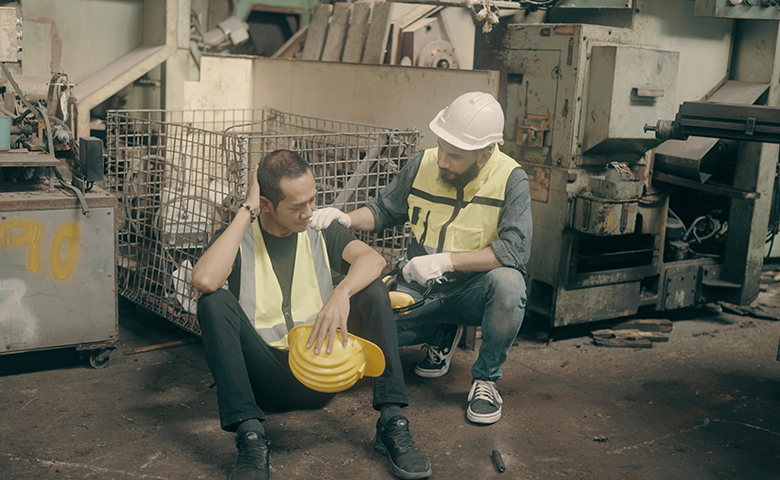54% of slips, trips and falls are the result of human factors. According to the Federal Motor Carrier Safety Administration, various human factors are the top three causes of fatal car crashes. And fatigue alone—just one of many human factors in the workplace—is regularly cited as one of the biggest safety concerns in most workplaces, with the National Safety Council noting that fatigue costs employers over $138 billion a year due to health-related effects.
Human factors? Your workplace has them. And they’re a major contributor to risk. What are they and how do you address them? With hard and soft skills.
Human factors are mental and physical states that influence how people behave. The most well-known human factor is fatigue, as everyone knows what it’s like to make mistakes because you’re tired. But there are plenty of other factors like rushing, frustration, complacency and overconfidence that increase the risk of injuries and error. Managing human factors is the next frontier in workplace safety, and you can learn more about it in a webinar that discusses managing human factors with a framework.
Soft skills refer to a set of personal abilities that individuals develop to interact effectively with others. They are usually non-technical and can include things like consistently communicating with empathy and being able to delegate, empower or read the room.
Soft skills and human factors are not new concepts nor are they unrelated. The first step in dealing with human factors is to understand how they work, which isn’t a soft skill at all— but putting that knowledge into practice is. At its heart, managing human factors is a mindset. It’s a way of looking at what’s going on around you. Once you learn to spot fatigue and rushing, you’ll start seeing it everywhere. And managing human factors is a way of interacting with others too. Once you understand the dangers of complacency then your toolbox talks will start looking a lot different.
The first step is to understand how human factors work. From there, it’s a matter of identifying them all around you and then pointing them out to others. Seeing human factors comes with practice, and the more you work on it, the easier it becomes to spot when someone is fatigued or to see a situation develop that could cause people to rush down the road.
Communicating it to others is a lot trickier because they won’t have spent the same amount of time or energy as you have in becoming more adept with human factors. Asynchronous safety knowledge is really hard to overcome.
The best bet is training everyone on human factors so that everyone has a common language around it and can speak openly, consistently, positively and with empathy—all the soft skills we’ve been talking about here, but specifically for human factors. The training should include what they are, how they work, and how workers should respond when they encounter human factors in the wild. And that’s easier said than done.
Courses like SafeStart offer a shortcut to human factors management, and in terms of saving time and effort, it’s well worth it, not to mention the lives saved and the ability to maximize your own investment in your soft skills.
Having functional soft skills in safety can help when introducing the personal aspects of human factors, but if done properly, human factors training and its related hard skills can also facilitate soft skills development. Because everyone has experienced human factors throughout their life, they are relatable, consistent influences that make empathy easy and stories abundant. We’ve all made mistakes. We all know what it’s like to be tired or in a rush. And the bi-directional nature of human factors and soft skills development are key inputs to other hard skills and safety actions.
This blog post is an excerpt from the safety guide 7 Essential Soft Skills For Hard Workplace Safety Problems, which explores the interpersonal skills that can transform how safety professionals engage workers and improve EHS outcomes.

